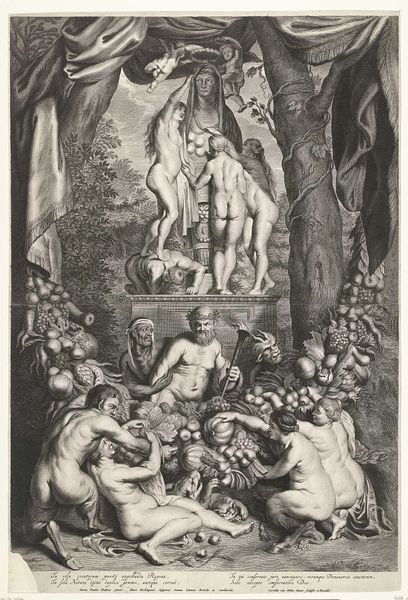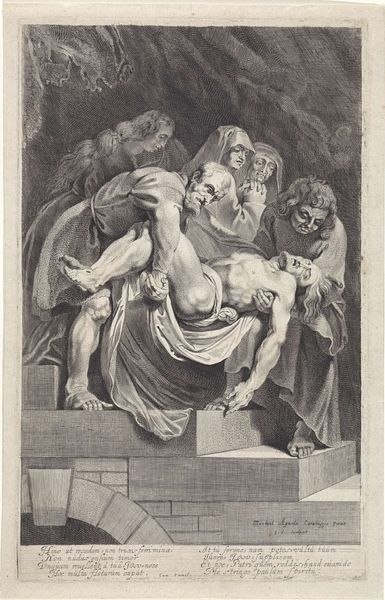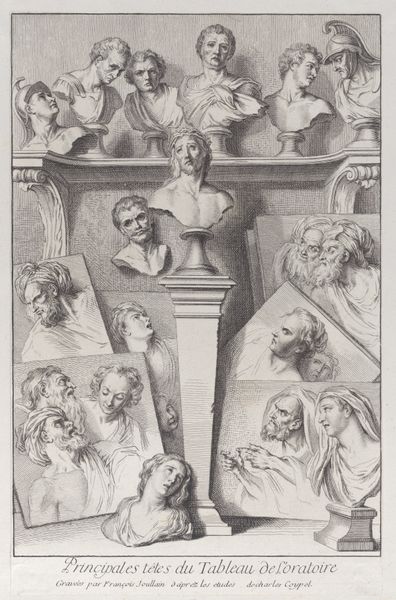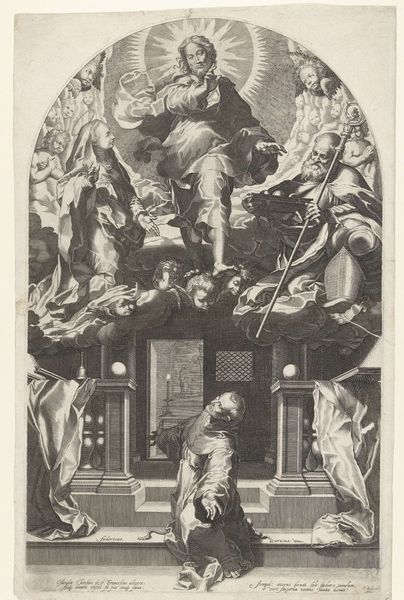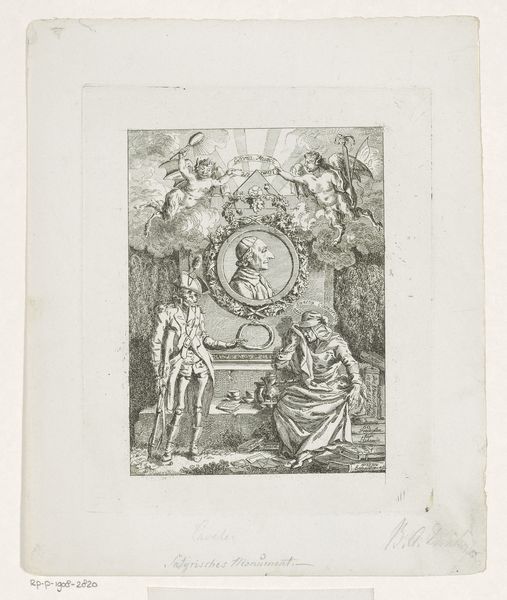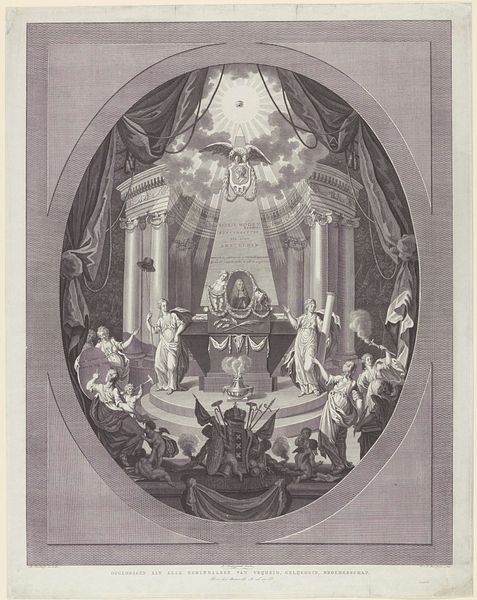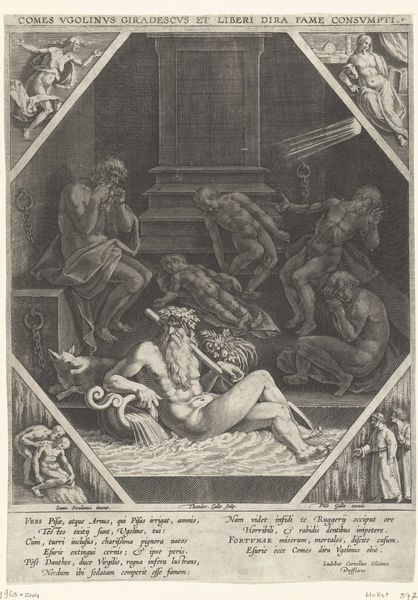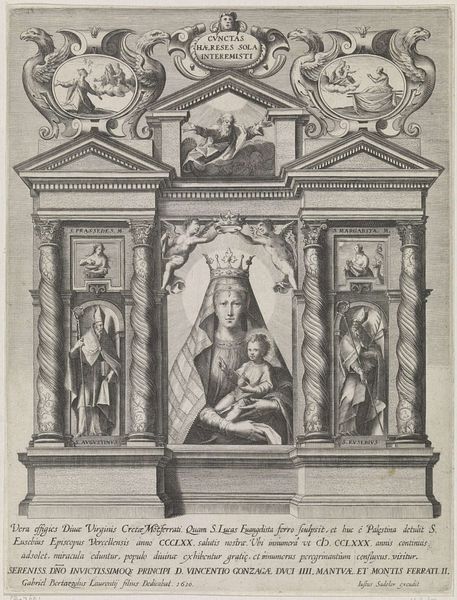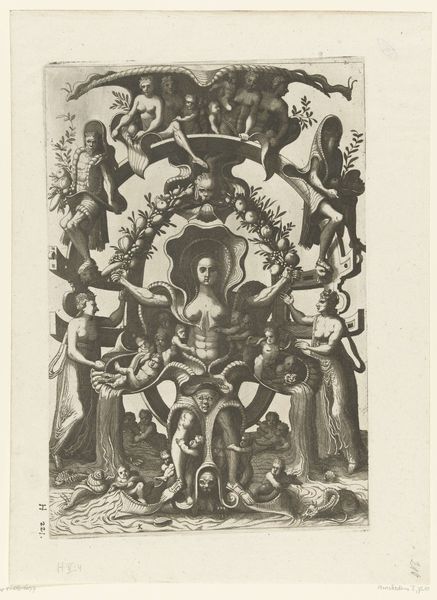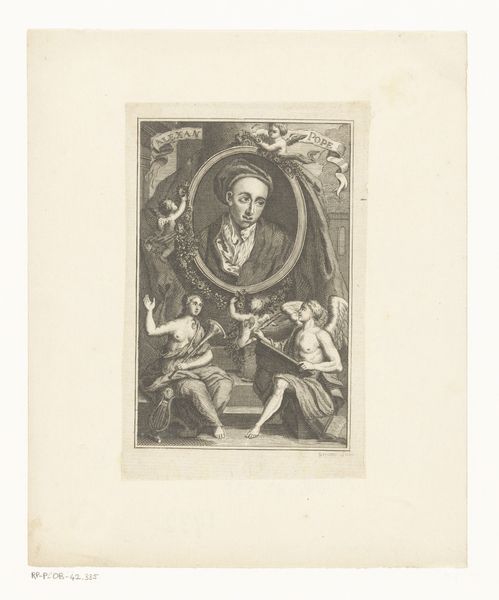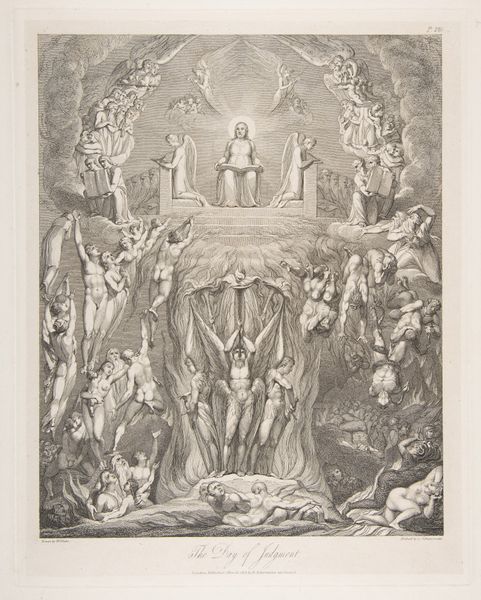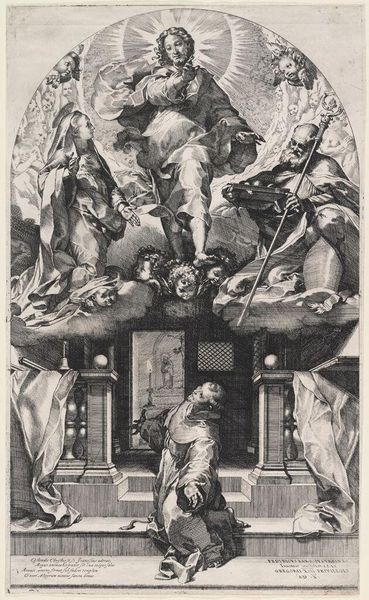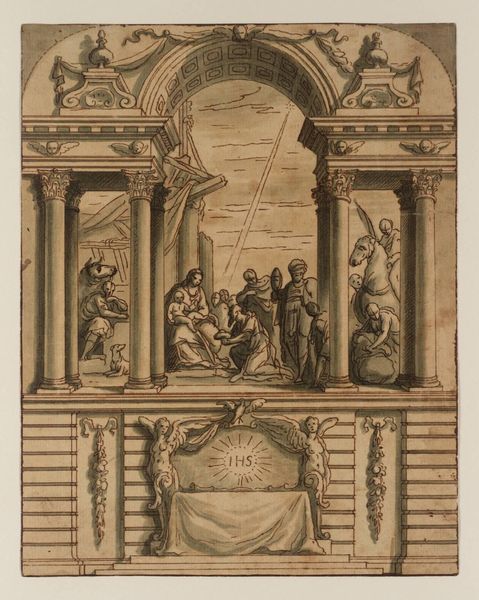
print, engraving
#
portrait
#
neoclacissism
# print
#
old engraving style
#
geometric
#
19th century
#
history-painting
#
engraving
Dimensions: height 771 mm, width 640 mm
Copyright: Rijks Museum: Open Domain
This print by Pietro Bonato captures the neoclassical monument dedicated to Maria Christina of Austria. The pyramid, a potent symbol, speaks of eternity and the mysteries of the afterlife, echoing ancient Egyptian beliefs adapted by the Romans as emblems of imperial power and divinity. Note the procession of figures ascending towards the dark, veiled doorway, a universal motif representing transition and mourning. This gesture mirrors scenes found in ancient Greek funerary art, where processions marked the passage from life to death. The motif has resurfaced time and again, a testament to humanity’s enduring fascination with mortality. It speaks to our collective subconscious, embodying both the sorrow of loss and the hope for transcendence. Consider the mourning angel seated beside the dormant lion, symbols of grief and strength, respectively. These figures evoke powerful emotions—a testament to the human condition. Such expressions, repeated across centuries, engage us on a deeply felt, subconscious level, reminding us of the cyclical nature of life, death, and remembrance.
Comments
rijksmuseum over 2 years ago
⋮
A highlight of Canova’s oeuvre is the tomb for Maria Christina, Archduchess of Austria, in the Augustinian Church in Vienna, made between 1789 and 1805. This highly original monument consists of a tomb with an open portal through which enters a cortege of life-sized sculpted figures. They lead the deceased to her final resting place as though in an everlasting funerary ritual.
Join the conversation
Join millions of artists and users on Artera today and experience the ultimate creative platform.
